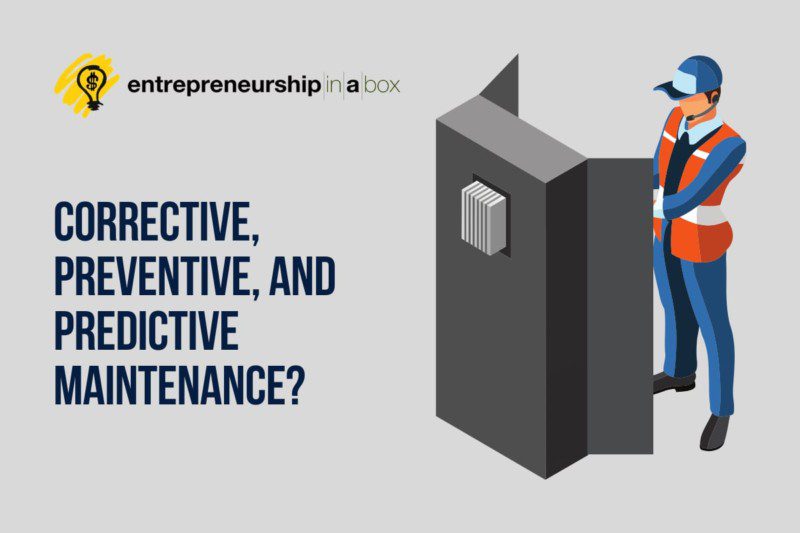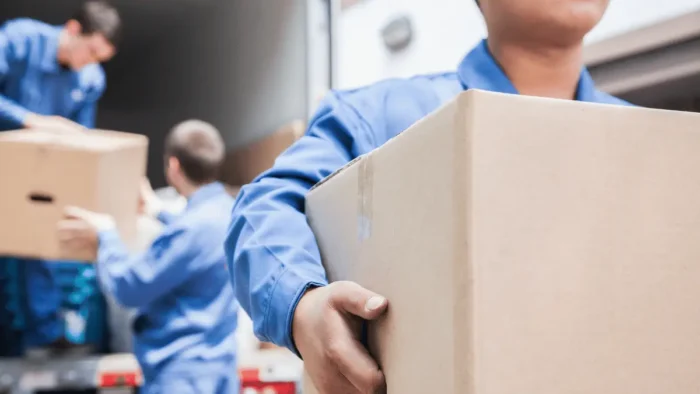If you want to build a sustainable business when your business is dependent on production equipment, then you need to invest in a preventive maintenance system. In such a way, you will prevent equipment failure, reduce downtime and maximize performance. One of the biggest mistake small business owners make is that they don’t think about preventive maintenance at all – even though it could prevent a lot of expensive equipment repairs.
Maintenance is one of the mainstays of running any business smoothly, regardless of size! With so many maintenance strategies going around, the question is, is it worth investing the extra money and resources into preventive maintenance?
The short answer to that is yes, yes, it is! And in today’s piece, we will explain precisely why you need to invest in it!
But before we go down that road, first, let’s take a few words to briefly explain what the three terms mean – predictive, preventive, and corrective maintenance.
What Is Equipment Maintenance?
Maintenance activities and procedures are important to keep your business equipment in good working condition. The main goal of maintenance is to prevent breakdowns, extend the life of equipment, and ensure that it continues to operate at the most optimal performance.
So, equipment maintenance is the process of examining, maintaining, and cleaning equipment to ensure it is in the right working condition and is performing efficiently. It involves inspection, replacing worn parts, repair, cleaning, lubricating, testing, and adjusting the equipment so that it functions properly.
Maintenance is an important part of keeping your equipment running efficiently and effectively, but it is often an overlooked activity in companies.
What is Corrective Maintenance?
The corrective maintenance approach involves repairing or replacing equipment after they have break down or has some type of malfunction. In essence, this is when the machinery stops working, and the team responsible for it then tries to fix or replace the broken part. The goal of corrective maintenance is to restore the equipment to its normal working condition as soon as possible.
Corrective maintenance is generally avoided for expensive machinery, but when the machine is expected to work until it fails, corrective maintenance can be a viable strategy.
There is planned corrective maintenance as well. While some would argue that it doesn’t exactly fit the bill for preventive maintenance, in edge cases where the only viable option is to replace the machine or parts of it, it can be considered to be a part of the preventive maintenance strategy, provided that spare parts are readily available and always in hand!
Steps to Implement Corrective Maintenance
Here are some steps that organizations can take to implement a corrective maintenance strategy:
- Identify equipment failures. The first thing you need to do for corrective maintenance is to identify equipment that has failed or malfunctioned. If there is no such equipment, then you will not have corrective maintenance.
- Reasons or causes for failure. When you identify equipment with failures, you need to check it to determine the cause of the failure. Also, analyze the failure to identify any patterns or trends that can suggest a systemic problem.
- Conduct the maintenance. Perform all the necessary repairs to restore the equipment to its normal working condition.
What is Predictive Maintenance?
Predictive maintenance is an approach to planning maintenance before any failures occur. How do we know what to predict and when to apply predictive maintenance? Simply, with this approach, we need to predict when to implement maintenance activities. So, you are using data, analytics, and predictive models to predict the life expectancy of the machinery based on historical data.
You can analyze data from sources like equipment sensors, logs, and previous maintenance records. Also, you can get data from equipment monitoring using, for example, vibration analysis, thermal conditions, oil analysis, etc. Having this data, you can easily identify some patterns, trends, and irregularities that can help you diagnose problems early and predict when equipment is likely to fail. In such a case, you can perform maintenance before these factors bring equipment failures or unsafe conditions.
Because this approach schedule maintenance at the most appropriate time, rather than performing it on a set schedule, it reduces unnecessary downtime and costs associated with maintenance.
So, the goal of predictive maintenance is to reduce downtime and maintenance costs.
In this maintenance strategy, the team responsible for the machinery keeps it in constant check and is ready to jump in and do the repairs at the first sign of trouble. This prevents the machinery from completely breaking down but still halts production lines for some time, as maintenance requirements can happen at any point during the runtime of the machinery.
Steps to Implement Predictive Maintenance
Here are some critical steps that you can take to implement a predictive maintenance approach:
- Make a list of all equipment that needs to be maintained. The first step is to make a list of everything that your business use as a piece of equipment.
- Identify critical equipment for maintenance. Now, you need to think about the importance of this equipment for the success of your company. What are the pieces of equipment that are critical to your business operations?
- Analyze the most critical equipment to find possible data. When you have identified all pieces of critical equipment, you will need to analyze them to check what type of data you already have and what you need to do to collect essential data continuously.
- Instal sensors. If possible, you need to install sensors and other data collection devices on your critical equipment to get data such as vibration, temperature, and other equipment performance indicators. So, you can use this data to detect problems early.
- Analyze data. When you have all the necessary data, you can start with an analysis to identify patterns, trends, and irregularities that tell you when the equipment will likely fail.
- Develop a maintenance plan. Now that you have data and prediction models, you can develop a maintenance plan that will include all the necessary tasks and procedures you need to perform on your equipment based on the data analysis.
What is Preventive Maintenance?
Preventive maintenance is maintenance that is performed regularly while the equipment is still in working condition to prevent equipment from breaking down. This is as opposite of corrective maintenance that is performed after the equipment has failed. Simply you need to identify all possible hidden risks while the equipment is in the operating stage to discover potential issues before they cause the failure of the equipment.
This maintenance is when the machinery is regularly checked, and repairs and maintenance work is done in fixed intervals so that the production line never stops. This system works best in conjunction with a CMMS (Computerized Maintenance Management System). Another benefit of the preventive maintenance strategy is that you can somewhat accurately predict the lifespan of your machinery and thus order replacements in time.
Preventive maintenance can help you extend the equipment’s life of equipment, increase efficiency and reliability, and reduce the risk of costly breakdowns.
Steps to Implement Preventive Maintenance
Here are some steps that you can take to implement a preventive maintenance approach in your company:
- Familiarize yourself with your equipment. The first step is to learn about your equipment, collecting and studying the manufacturer’s recommendations, industry standards, and the equipment’s current operating conditions.
- Create a preventive maintenance plan. When you become familiar with your equipment, develop a maintenance plan that includes the procedures with timing and tasks that need to be performed on each piece of equipment.
- Implement your preventive maintenance plan. When you have a plan start implementing it and measure the results to ensure it achieves its goals. If you don’t meet the goals, you must change the plan.
Pros of Preventive Maintenance
When it comes to preventive maintenance, one of the significant pros associated with it is that there is little to no downtime with this strategy. In the long run, preventive maintenance saves more revenue, especially when it comes to expensive and mission-critical machinery.
It also helps reduce the wastage of human resources, as most of the maintenance is done when no actual work is being performed. Along with that, regular preventive maintenance also helps increase the life cycle of your resources and ensures that efficiency is never compromised. Also, preventive maintenance removes the need for constant human monitoring, which is an excellent bonus as most of the work is automated and performed by a CMMS.
So how does it differ from predictive maintenance? The primary difference is that it doesn’t need a team of highly experienced workers to check the machinery’s health constantly. It can also become exceedingly difficult to predict when complicated machinery is about to break down, which means that if an unexpected fault occurs, the entire production line comes to a screeching halt!
This is why preventive maintenance is preferred over the other two methods as an overall safer and much more resource-efficient maintenance strategy. Not only does it reduce the strain on the workforce, but it also eliminates the human error portion of it, as preventive maintenance is mostly scheduled by a CMMS that finds it pretty easy to monitor and schedule multiple pieces of machinery at the same time!





